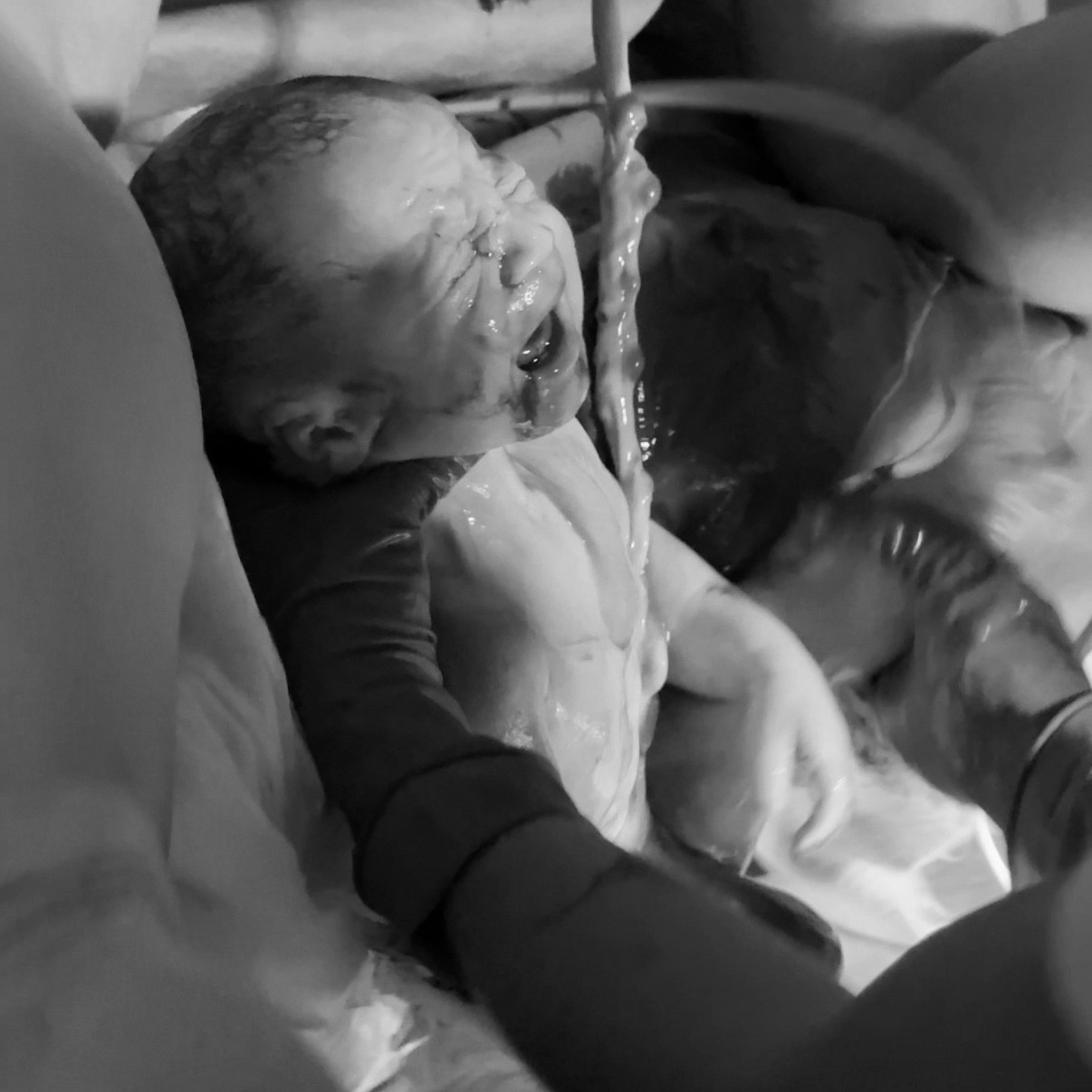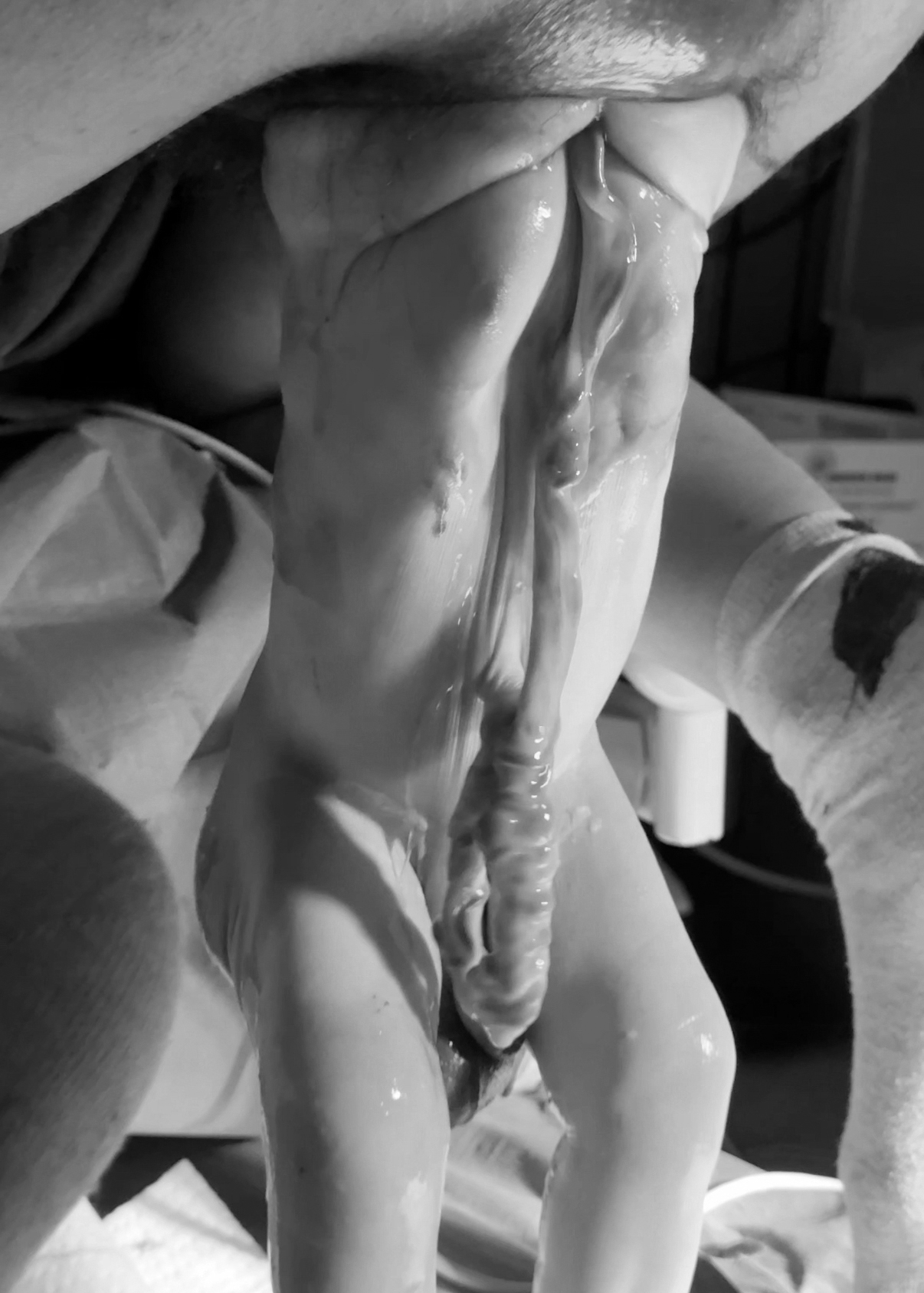Unmedicated breech birth in Italian hospital felt as at home
30 years old, first-time mum, shares her story of finding support for a safe and empowering vaginal breech birth in Abruzzo, Italy.

I entered my pregnancy full of energy and positivity. Everything went smoothly, no sickness, no cravings, no fatigue, and my gynaecologist often called it "a pregnancy straight from the obstetrician's manual."
Thus I had a very active pregnancy from the first days until last days of this pregnancy: working throughout, skiing until the forth month, a road trip in Africa at five months, climbing until the seventh, and hiking right up to the final weeks. I simply continued living my normal life, fully aware that I was growing a new human being inside me.
Having always dreamed of a physiological, unmedicated birth, this easy pregnancy strengthened my confidence that I would be able to experience the birth I had always imagined. I've always believed that birth isn't just a step towards motherhood, but a transformative experience that shapes a woman as a human being and profoundly influences the bond with her child. For me, experiencing a natural birth felt existentially important.
Then out of the blue at my 34+4 weeks appointment, I discovered that my baby, who had been cephalic throughout the pregnancy, had turned transverse. It was a shock for everyone: me, my husband and even for my doctor. I was told, "It's still early, hopefully he'll turn. The worst that can happen is a C-section." Since a caesarean was never part of my plans, I began exploring every unconventional method to help my baby turn: from inversion exercises and 'crab walking' to acupuncture, while still planning for a natural birth at the small local hospital we had chosen.
At 36+6 weeks, I had an appointment with the ob-gyn from the hospital where I was planning to give birth. During the final scan before being admitted, as I was expressing my wish for an unmedicated, physiological birth, the doctor interrupted me: "Oh dear, your baby is breech. There's no way you can have a safe vaginal delivery. In Italy, we don't take that kind of risk. A C-section is your only safe option."
I tried to argue and asked about alternatives such as an external cephalic version (ECV). The doctor said he knew a specialist who performed it, but that it was risky, again insisting that a C-section was the only safe choice. I was even accused of putting my baby's life at risk, as if I were living in a "third-world country." Given my personal experience, where a breech presentation has always been seen as a variation of normal rather than a pathology, this reaction felt almost surreal to me. My own mother had been born breech through vaginal delivery, and two of my friends had also given birth to breech babies vaginally - one of them even at home, unassisted. To me, a C-section did not seem to be the only safe option. Both my baby and I were perfectly healthy, as I mentioned earlier, I had experienced a wonderful pregnancy that never once felt like an illness. Being sent for major abdominal surgery solely because of a breech presentation felt like pure violence.
Fortunately, I had enough self-control and determination not to break under pressure. I followed my instincts and requested an appointment for an ECV consultation - four long days of waiting ahead.
Even after the breech position was confirmed, I continued preparing for a natural birth: practising with the Epi-No device, doing perineal massage, and keeping active with all imaginable exercises to encourage the baby to turn. My husband was understandably worried about our safety but respected my determination to find a solution. Over the next few days, we called every obstetrician, midwife and paediatrician we knew, asking for their advice. Every single one, even the more openminded specialists, told us the same thing: ECV was risky, and vaginal breech birth was "a kind of suicide." We called almost every hospital within a 200-kilometre radius asking for a possibility of a breech vaginal delivery. The answer was always identical:
"Absolutely not. Only C-section for breech position."
Still, I stubbornly believed that a C-section was not the best option for me or my baby. Feeling increasingly desperate, I saw only three possible choices:
- Home birth with my husband only, since no midwife was willing to attend a breech home birth, but this felt unsafe, as we live in a rural area far from any hospital.
- Waiting for active labour at home, then arriving at the hospital fully dilated to avoid a C-section, but this, too, felt risky, since no one at the local hospital seemed to have experience with vaginal breech births.
- Leaving the country to give birth abroad, which seemed nearly impossible at 37 weeks pregnant.
With all these thoughts in mind, at 37+3 weeks I arrived for my ECV appointment at Pescara Hospital, where I met Dr Claudio Celentano - the person who changed everything. An exceptionally experienced obstetrician, university professor, and one of the kindest human beings I've ever met, whom I later discovered was also a Breech Without Borders instructor. During the consultation, he explained that my baby was firmly seated in a breech position, and an external version was unlikely to succeed. Then he said:
"You have two options: you can have a planned C-section, or you can have a vaginal birth."
"What? Really?" I replied, stunned, and told him about my desperate search for someone willing to support a vaginal breech birth. I was overwhelmed with relief. In that instant, my life changed - I burst into tears.
The next day, during the ultrasound, the baby's position seemed more favourable for an ECV, but it didn't succeed. As Dr Celentano had remarked from the beginning, my baby seemed quite determined to be born breech. So breech it would be. I didn't experience any complications after the ECV attempt. I was monitored for a few hours afterwards, but both the baby and I felt great, so I was allowed to go home. From that moment on, I attended regular hospital check-ups, waiting for labour to start naturally.
Three weeks later, on the morning of 40+2, my waters broke. Contractions were regular but mild. My Group B Strep test had been negative, so I decided to stay calm, wait a while, and then go to the hospital for monitoring to make sure everything was fine. At 1 p.m., I was only 1 cm dilated. The on-call obstetrician wanted to admit me, but I couldn't imagine lying in a hospital bed doing nothing for possibly the next 10-12 hours. I declined and asked my husband to drive me home, preferring to labour in my own environment.
At 11 p.m., we returned to the hospital for another check-up. The CTG and ultrasound were fine, but I was still only 2 cm dilated. I was already mentally prepared for a long labour. The staff, who already knew I didn't want to be admitted before active labour, smiled and joked, had me sign the same forms again, and let me go home.
By 2 a.m., contractions became stronger and closer together - I could no longer talk through them. So at 4 a.m. (40+3 weeks), my husband and I made our final trip to the hospital, knowing we would soon meet our son.
By 6:30 a.m., I was 6 cm dilated and in active labour. In the delivery room, I met Dr Celentano, who had come specifically to attend my birth, and a wonderful midwife, Alessandra, who supported me throughout the process.
Before labour became intense, I had imagined that physical contact with my husband - some hip squeezing or back massage - would bring relief, but as contractions intensified, I realised I couldn't bear to be touched during them. Even the CTG monitoring became a real challenge. Thus I lived the first part of active labour alternating between sitting on the toilet (which suddenly felt like the most comfortable place on earth) and sitting on the birthing ball, moving my hips instinctively.
Around 10–10:30 a.m., I began to feel strong pressure on my intestines. The midwife suggested I stand to help the baby descend, and it worked. After two contractions in an upright position, the pressure in my pelvis changed dramatically - I could feel all the baby's weight pressing down through my birth canal. After a few more contractions, I started feeling the urge to push. Dr Celentano calmly guided me to move onto all fours on the bed and said:
"When you feel the urge to push, push longer even after it fades. Don't be afraid. When you feel overwhelmed, continue pushing."
Those words helped me stay focused and in control during the expulsion phase. I knew breech labours are often longer than cephalic ones, since the baby needs more help descending, but everything progressed beautifully. Once I was on the birthing bed, I asked the midwife to use oil to help my perineum stretch. I don't know whether it was the oil, the exercises I'd done during pregnancy, or simply genetics, but together they worked perfectly, and I had no tearing at all.
During the pushing phase my husband stayed by my head, comforting me through each contraction and watching our baby's progress. At one point, when I cried, "I can't do it anymore," he whispered, "I can see him - he's coming!" Even now I don't know if my husband cheated then or if I really was at a good point, but that affirmation gave me a strength I didn't know I had. My baby, in a frank breech position, was born naturally: first his testicles, then his hips, legs, arms and shoulders - and finally, with one last push and a gentle shoulder pressure from the midwife guided by Dr Celentano, baby's head was born.
My dream of a physiological, unmedicated birth had come true. At 12:46 p.m., our baby boy was born. My husband caught him and immediately placed him on my chest. Alert and curious from the very first moments, our baby instinctively found my breast and began to feed. We waited for the placenta to be delivered, and only then my husband cut the cord. Our boy weighed 3.3 kg and measured 49 cm. He received an Apgar score of 9/10. He had a small haematoma on his testicles (completely normal for breech position, as we were told) which disappeared within a few days. Follow-up ultrasounds confirmed that he was completely healthy and had no birth trauma.
In summary: a healthy, calm baby; a non-traumatic birth for me; a positive emotional state before, during and after birth. I was able to walk immediately after birth and regained my strength within a few days.
No induction, no epidural, no pulling, no rotation, no forceps, no episiotomy. Just a deeply respectful and patient team of professionals who managed to create a sense of intimacy and trust within the hospital walls allowing a truly natural birth to unfold.

